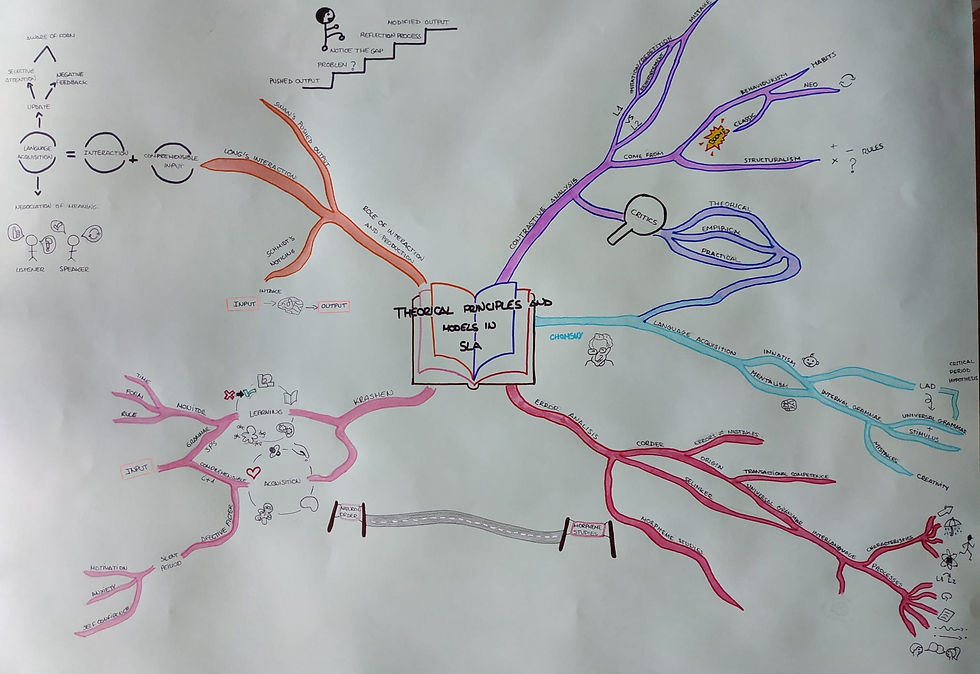MIND MAP
- Malena&María
- 4 ene 2021
- 1 Min. de lectura
Actualizado: 8 ene 2021
Hi friends!! In this post you can find a Mind Map about the main approaches of language learning. But...What is a mind map?
"A Mind Map is an easy way to brainstorm thoughts without worrying about order and structure. It allows you to visually structure your ideas to help with analysis and recall.
A Mind Map is a diagram for representing tasks, words, concepts, or items linked to and arranged around a central concept or subject using a non-linear graphical layout that allows the user to build an intuitive framework around a central concept". (MindMapping.com)

About the content:
We have done this Mind Map for Learning and Teaching EFL (English foreing language) subject and it shows the following approaches:
Contrastive analysis: interference between L1 and L2.
Language acquisition/ Chomsky: innatism and mentalism. Here we can find some key elements such as internal grammar, universal grammar, stimulus, critical period hypothesis, mistakes, etc.
Error analysis: two important authors are Corder and Selinker. Some important elements that appear are interlanguage, fossilization and morpheme studies.
Krashen's hypothesis: Learning vs acquisition, the natural order, monitor, affective filter and comprehensible input.
Role of interaction and production: There are authors; Schmidt who explains the idea of noticing, Long which theory is based on interaction and Swain with the idea of pushed output.
To make this Mind Map we have the help from Izarbe and Laura, our partners of group. They are the creators of the Two trainee teachers blog. In order to work on this project we had to meet for several days following a process of ideas and data collection.
Here you have the link to their blog: https://twotraineeteachers.wordpress.com/




コメント